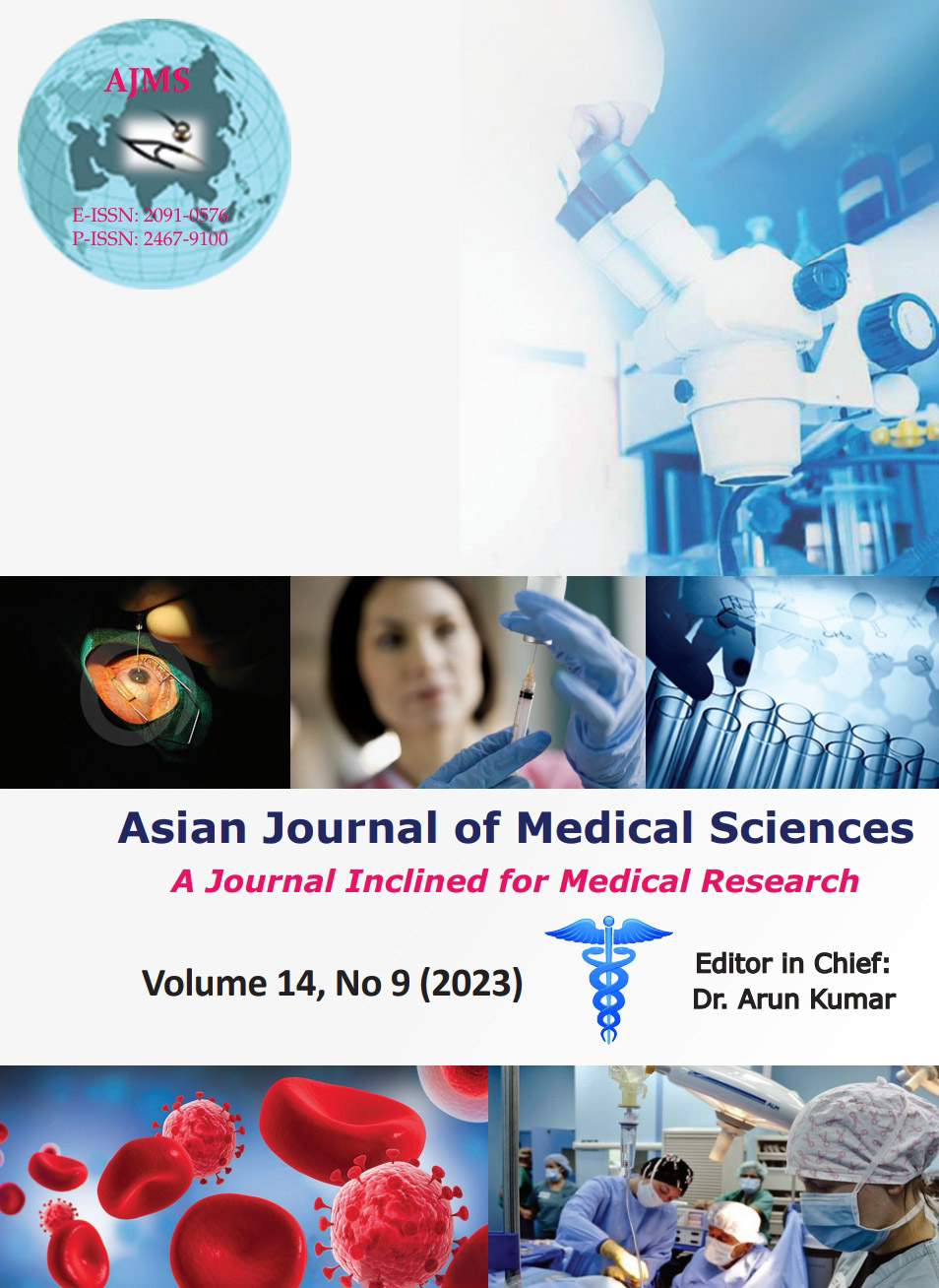Intubation challenges in surgeries of thyroid swellings
Keywords:
Difficult airway; Thyroid swelling; Endotracheal intubationAbstract
Background: Difficult airway is when a trained anesthesiologist experiences difficulty with face mask ventilation of the upper airway or tracheal intubation or both. It has always been a challenging issue for anesthesiologists.
Aims and Objectives: The objective was pre-operative assessment of airway in patients with goiter and to find the incidence of difficult intubation and its management.
Materials and Methods: A prospective study was done in 32 patients presenting with goiter of various sizes. Routine airway examination includes mouth opening, Mallampati grading, neck circumference, neck mobility, thyromental distance, tracheal deviation on chest X-ray, AP and lateral views of neck, and Cormack-Lehane grading on laryngoscopy. The technique followed in each case was noted.
Results: Out of 32 cases, difficult intubation was experienced in five cases. Among the studied parameters, neck mobility (66.7%) followed by neck circumference (44.4%) and Mallampati grading (37.5%) was found to be more predictive in assessing the airway. 62.5% patients were intubated through direct laryngoscopy, followed by bougie in 21.9% patients. Due to difficulty in intubation, 15.6% patients were intubated through videolaryngoscopy.
Conclusion: We conclude that induction of anesthesia can be challenging for patients with goiter. A thorough history and examination are mandatory pre-operatively in these patients. Neck circumference and neck mobility are the most crucial factors as evident in our study. Videolaryngoscopy plays an important role in patients with difficult airway.
Downloads
Downloads
Published
How to Cite
Issue
Section
License
Copyright (c) 2023 Asian Journal of Medical Sciences

This work is licensed under a Creative Commons Attribution-NonCommercial 4.0 International License.
Authors who publish with this journal agree to the following terms:
- The journal holds copyright and publishes the work under a Creative Commons CC-BY-NC license that permits use, distribution and reprduction in any medium, provided the original work is properly cited and is not used for commercial purposes. The journal should be recognised as the original publisher of this work.
- Authors are able to enter into separate, additional contractual arrangements for the non-exclusive distribution of the journal's published version of the work (e.g., post it to an institutional repository or publish it in a book), with an acknowledgement of its initial publication in this journal.
- Authors are permitted and encouraged to post their work online (e.g., in institutional repositories or on their website) prior to and during the submission process, as it can lead to productive exchanges, as well as earlier and greater citation of published work (See The Effect of Open Access).




